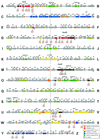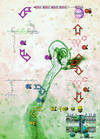Keys to symbiotic harmony
- PMID: 11004160
- PMCID: PMC94683
- DOI: 10.1128/JB.182.20.5641-5652.2000
Keys to symbiotic harmony
Figures




References
-
- Arumuganathan K, Earle E D. Nuclear DNA content of some important plant species. Plant Mol Biol Rep. 1991;9:208–218.
-
- Bassam B J, Djordjevic M A, Redmond J W, Batley M, Rolfe B G. Identification of a nodD-dependent locus in the Rhizobium strain NGR234 activated by phenolic factors secreted by soybeans and other legumes. Mol Plant-Microbe Interact. 1988;1:161–168. - PubMed
-
- Bazin M J, Markham P, Scott E M, Lynch J M. Population dynamics and rhizosphere interactions. In: Lynch J M, editor. The rhizosphere. Chichester, United Kingdom: John Wiley & Sons; 1990. pp. 99–127.
-
- Bender G L, Nayudu M, Strange K K L, Rolfe B G. The nodD1 gene from Rhizobium strain NGR234 is a key determinant in the extension of host range to the nonlegume Parasponia. Mol Plant-Microbe Interact. 1988;1:259–266.
-
- Bolanos-Vásquez M C, Werner D. Effects of Rhizobium tropici, R. etli, and R. leguminosarum bv phaseoli on nod gene-inducing flavonoids in root extracts of Phaseolus vulgaris. Mol Plant-Microbe Interact. 1997;10:339–346.
Publication types
MeSH terms
Substances
LinkOut - more resources
Full Text Sources

